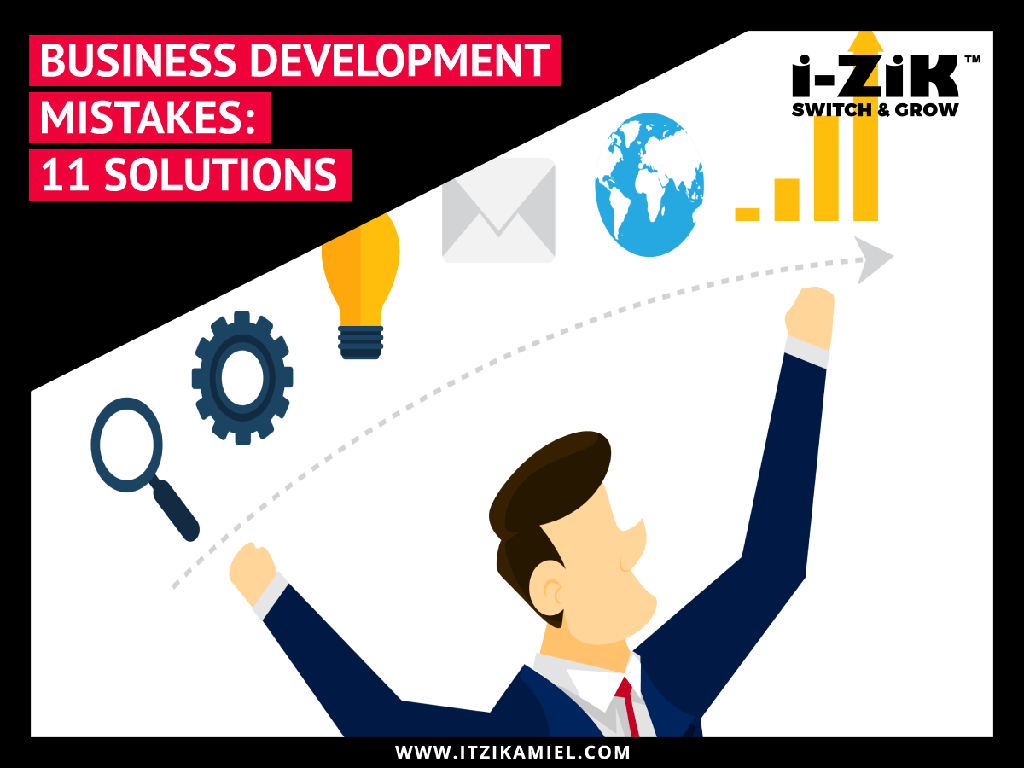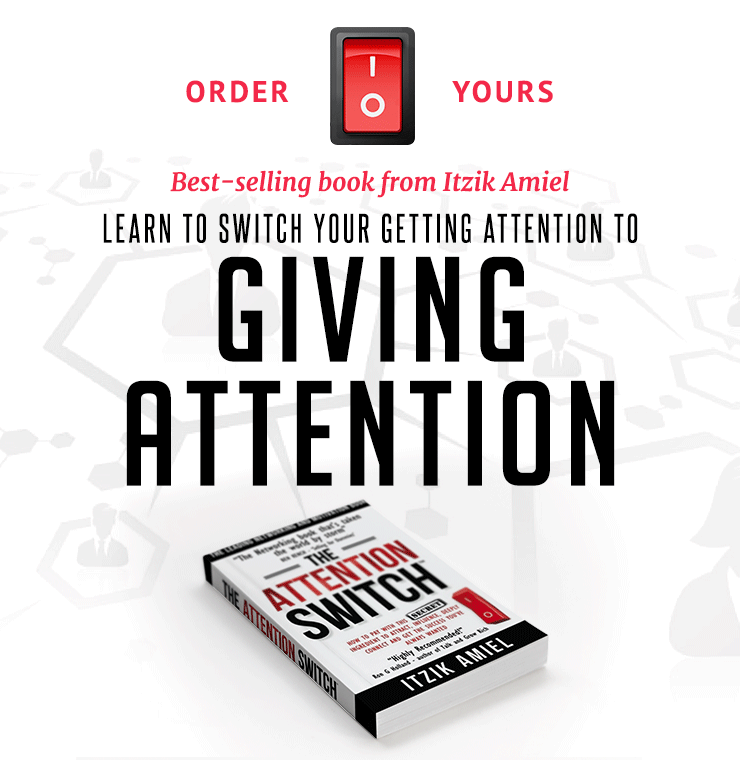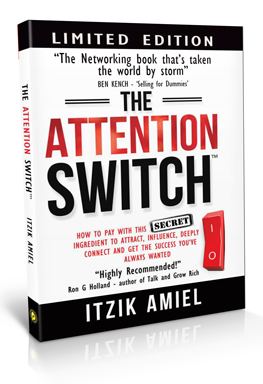This one thing is equal for both starting professionals as well as professionals that run their own practice for quite some time.
Fatal mistakes that are frequently made, quite often, in the development of your practice.
I know it first hand since I’ve personally made more than my share of them during my professional career.
Many professionals understand that business development is essential to growing their practice in the short run, as well in the long run.
Unfortunately, during my work for the last decade with these professionals, I found common patterns that lead to a poor and non-effective execution of the business development plan.
These mistakes resulted in generating less business and slowing down the growth of their practice.
So, here are 11 simple solutions to the most common business development mistakes.
All ready to implement in your practice.
1. Plan every business development activity
Planning every business development activity is the key to success, if you do not have a plan for your practice business development then you will just end up falling into someone else’s plan and your practice will not amount to much but mediocrity.
Half of each success is planning.
The Mistake:
In my experience, I met many professionals who build great business development activities but did not see direct tangible results.
They participated in events and conference. They became a member of a professional network. They organize special events for prospect clients and went to a one-on-one meeting with them.
But in the end, nothing came of it and they didn’t spend time talking in depth about the business opportunity with these prospects.
This is a result of the fatal mistake many professional make. The lack of advance planning of each business development activity.
The Solution:
In other words, you need to plan every business development activity, in advance.
I make plans on a weekly, monthly, quarterly and annual basis.
The reason for that is that more information is disclosed to me over time and it needs to be taken into account when scheduling a business development activity.
I suggest you use a simple 2 steps process:
Step #1: You need to think about what you want to accomplish in the specific business development activity. For yourself & for your practice.
Step #2: Decide for yourself how you’ll judge whether it’s a success, almost a success or a failure.
Only then you can correct your actions and refine them.
One important point to mention is that you should not always define success in getting the prospect to become a client.
Sometimes success in a business development activity can simply mean to reconnect with a lost client. Or take another action to strengthen the relationship with a specific prospect etc.
And remember, it is always great to keep track in writing on the results of each activity….
…To avoid making the same mistake twice.
2. Select your potential clients carefully
The Mistake:
As a firm believer in building relationships for a lifetime, I know that it is one of the powerful ways to develop your business and creating more referrals opportunities.
But building a network of relationships is not enough.
One of the main mistakes many professionals make in their business development efforts is to assume that knowing a person for a while is enough.
Some professionals assume that since they were with a potential client together at university or belong to the same club, or are related to each other in some way or another, they automatically will get the business from them.
So they chase these prospects in different ways, organize lunches or coffee meetings, inviting them to events, send cards and hoping to get work from them.
But, no work really materialized.
Why?
Ask yourself the following question – how much do you know about the prospect you are chasing except the fact that you belong to the same club or studied together?
Most of the time, not much.
The Solution:
The first rule of business development is to know about the company and executives you are going to pursue, in much more details.
So here is the point I want you to remember:
Regardless of things such as belonging to the same club or attending the same university, there are some prospects that simply won’t hire you and your services for reasons that have nothing to do with you!
These are reasons that have nothing to do with your capability or quality or prices.
So what other reasons am I referring to?
For example, it could be the fact that this professional belongs to a specific network and because of that he is obliged to use only the services of others in the network.
Or it could be that one of the family members of this prospect delivers the exact same services as you do.
Or another possibility, maybe one of the board members of this prospect’s company renders these services to the prospect’s company.
You see, in these situations, the chance that you will get the business is very small (although it always exist).
So, ask yourself are you better of dedicating your business development efforts on prospects like the latter one or others that you have bigger chance to get the business?
I assume the answer is obvious.
Better to know this upfront than waste time.
Learn to make the right choices and not chase prospects who will never hire you no matter how long you’ve known them.
3. Learn to give attention (vs. Get attention)
The Mistake:
It’s important for any good professional to try to get into the mind of potential clients.
Obviously, in a crowded marketplace professionals who fail to take clients or potential clients into account by giving them their genuine attention, can actually do tremendous harm to their practice—you never want your clients or potential clients to feel like they’ve been ignored!
What does it mean to feel ignored? What is the fatal mistake?
Clients or prospects that feel ignored often compare the feeling to rejection.
As irrational as these feelings may be, emotions like rejection and lack of attention, influence engagement decisions made by your prospects or clients.
The Solution:
It is important to not only care about the way your prospect or clients feel but to clearly demonstrate that you care by giving your authentic attention to them.
We all know these professionals that every time you meet them. They do most of the talking.
And most of it is about them, their practice, their wishes, their services…
I suggest you learn to give attention.
[I refer you to my bestselling book about this subject and with practical tools to boost your attention giving skills see: www.attentionswitch.com (this is the limited edition of my book and except for getting an additional free training as a gift, the fee goes to support a charity!]
By doing so, your prospects will share with you their needs, their wants, the reasons why it is important to them and what kind of service provider they are looking for…and much more…
…and it only happens if they do most of the talking and you give your full attention to them.
4. Build Relationships, don’t sell
The Mistake:
Almost every time I get to keynote about “The Power of Connections to grow your business”, I asked in a random way, a few people in the audience to introduce themselves.
Rather than the person shares a few things about herself, many people – not only professionals – immediately start telling about their work and pitching to me and the audience, without knowing if anybody is interested in their services.
Sad.
I am sure you experience the same thing when attending a conference or a professional event.
You meet a person for the first time, and instead of having a sincere conversation and asking relevant questions to get to learn more about the other person, many professionals start to talk and pitch about their services right away , as they’re shaking hands for the first time.
What a waste of time.
The Solution:
Networking events are meant to be a starting point to build relationships.
Instead of trying to sell yourself at these events, make it your mission to connect with people and enjoy learning about them.
This is the first step in building a relationship.
This is the main part of the business development of your practice. Sadly, many times is forgotten by many professionals.
These people you just met, might need what you offer at some point in the future or they may know another person who needs your services
The more you learn to connect and enjoy the process, the easier it will get to learn the ways in which you could help this person.
Now, go and follow up.
And that brings me to the next fatal mistake of business development done by professionals:
5. Follow-up with key people
Let me ask you a question.
You participated in the event, you spend your valuable time and money to be there. You met many people and you even carefully planned this business development activity in advance. Great.
Now what?
Many of us will get back to their practice and follow up by sending an email to all the people you met (hopefully you sent this follow up email yourself…).
Week passed. A month passed. Nothing happens and you forgot to continue the follow-up.
The Mistake:
But here is the much more terrifying fact –
The new contact also forgot you.
Result: If you do not follow up…you fail!
This is a fatal business development mistake that many professionals make. Even those who learn to follow up, do not follow up enough.
The Solution:
I believe that the follow-up process is one of the most important aspects of business development in terms of building on relationships with current and potential clients.
Over the years I learned that following up with everyone you met, is a waste of time.
Not everybody is a viable prospect for your practice. So every time you meet a new person try to make your first initial judgment if any follow-up makes sense.
The more you will do it the more practice you will gain and the easier (and even more accurate) your judgment will be.
The most important thing is that you will follow up, follow up, follow up…
Remember, follow-up actions aren’t always about getting another chance to pitch to your prospect. Sometimes, just being able to gauge their needs through conversation can make all the difference in the long run for the business development of your practice.
[I wrote a lot about the significance of following up with your clients and you can read more here].
6. Lost or quite clients are not lost relationships
The Mistake:
Think about a client you used to work for.
When you were working for them, communication was simple! You emailed them, they emailed you; they gave you a project, you serve them. The rules were clear.
Then you finished up your work on the project with them, thanked them – and said, breezily, “Keep in touch!”
What did you do next? Did you send an email since? How did you keep in touch?
Did you invite them to a special event? Did you schedule a coffee meeting with them once in a while?
What did you do?
Experienced professionals know that the best clients are repeat clients and that it’s much easier to reconnect with a previous contact than it is to establish a completely new connection.
But “keeping in touch” is easier said than done!
This is a real business development mistake.
The Solution:
First, relax. Keeping in touch doesn’t mean a lot of work.
You don’t need to connect with them every week or meet every month…
You can keep in touch by simply sending them something of value – an article you read or a link to special news that may interest them or a special hand-written card ( I like this one very much and use it myself all the time) etc. It can be done once in a while.
Remember: the success in keeping in touch is by taking this step and by acting. Your success does not depend on the reply you will get from your former or a lost client.
Now, I am aware, very many professionals find themselves very busy that they lose touch with old clients and contacts.
And then, due to the long time passed since the last time they communicated with this client, it becomes too embarrassing to call to re-establish contact.
But unfortunately, if you’ve dropped out of touch – they’re not going to call you.
No matter how great a job you did: you not on their mind. They probably have other priorities.
So if you want to get back in touch – you’re going to have to take the first step.
[I wrote at length specifically about this mistake and more solutions and you can read more here].
7. Always be a person of Value
The Mistake:
This mistake, I see a lot of professionals are making: Trying to convert a prospect to become a client too soon.
By Trying to rush potential client to become a client too soon, you’re actually focusing on your wants, not a prospective client’s needs.
Thus, the potential client does not see any use or value to staying in touch with you.
The Solution:
Let me emphasize it again: Business development is about relationships.
In order to win a deal or engage a client, it is essential to build a relationship. The root of relationships is embedded in providing mutual value to both parties.
You are probably familiar with the saying, “you get what you put in.” That saying has more relevance now than ever before.
In order to win the approval and acceptance of potential clients, it is more important than ever to you as a professional to provide value first before asking for anything in return from the other person.
You need to become a useful resource for your potential clients.
The more value you offer, the more a potential client comes to depend on you. Don’t hesitate to share information they may find useful, whether or not it benefits you in any way.
In the same respect, refrain from bombarding them with irrelevant news (as unfortunately many professional still do), and don’t bother them with offers you know won’t likely interest them.
It is important to be mentioned that sometimes you need to nurture relationships for as long as years before it produced work. And all this period you continue to be a person of value.
8. Ask & Offer To help
The Mistake:
You need to learn to ask for new work. Especially when you are busy.
In my conversation with different professionals, I discovered that a lot of them see asking a client to help them as a “pushy” behavior.
As one professional recently said to me: “
“We are here to serve the clients, not to bother them. The client tells us what they need and we supply it.”
Really?
That is exactly the fatal business development mistake. This mindset that asking and offer to help others in a ‘pushy’ behavior – is wrong.
The Solution:
If I assume you give genuine attention to your clients. You listen to the information they share with you in your conversations with them. Then many times during these conversations the client will share with you issues they struggle with [I am sure it has also happened to you more than once!].
So you want to tell me that if you ask and offer your help to solve the struggle for them, the client may see it as ‘pushy’ or ‘sale-sy’ behavior?
You will have a hard time convincing me.
For me, it is a pure business development opportunity given to you on ‘a silver tray’.
I believe that you oblige to ask and offer to help. It will show you care, your empathy. It shows that you are truly listening to their needs and focus on solving it for them.
No doubt that acting in this way also help to make you even more trusted advisor for your clients.
Isn’t that what you want?
9. Continue to be Creative & Proactive
The Mistake:
Reviewing many business development activities done by many of our clients in the last 3 years, I found a lack of creativity.
Henry Ford once said: “If you do what you’ve always done you’ll get what you’ve always gotten.”
This is also true when we are dealing with professional business development.
When was the last time you, as a professional, called a client and suggested a new idea or solution to improve and help their business?
Unfortunately, many professionals learn to become reactive in their practice. They only act when a client asks them to do so.
The mistake is that running your professional practice solely on a reactive-passive approach will harm your potential growth.
The Solution:
In my experience, helping the growth of many professionals practice globally, the most valuable professionals are the ones who are proactive.
By definition, this means they are the one who comes with new ideas and solutions to their clients rather than waiting to respond to clients requests.
Professionals who are embracing business development is a proactive way, don’t sit around waiting for answers to appear; they stand up, put one foot in front of the other, and find the answers. They’re resourceful.
Proactive and creative approach to business development is constantly moving professionals forward, looking to the future, and making things happen.
Being proactive in the business development of your practice is a way of thinking and acting.
10. Set the Right Expectations
The Mistake:
A common mistake of professional when it concern business development is having too high expectations.
Be honest — you don’t invest time in business development just to meet new people. Sure, that’s part of it.
But, ultimately you’re hoping those new potential clients will be able to benefit you in the future, whether by becoming your clients themselves or by introducing you to someone else that might become your client.
The Solution:
It’s important that you’re realistic about your expectations when engaging with business development activities.
Don’t expect to make your introduction and immediately ask that person to become your client or to refer you to a new client.
Remember, you’re building relationships — and that takes time.
11. Adopt ’Play-to-win’ Approach
The Mistake:
Much professional biggest business development mistake is acting from a point of ‘not to lose’. This approach will make these professionals non-memorable and deleted out of their prospect clients minds.
The result, when the time come and the prospect need your services, he does not think about you…and your competitor wins the business.
The Solution:
As a professional If you aren’t trying to win, if you’re just trying to participate, you are wasting your time and the time of your prospect.
As a professional, you have to define your practice purpose strategically, decide what specific business development victories would lead to your practice ideal future.
Of course, you can’t win the whole world or please everybody.
Trying to be all things to all potential clients is a recipe for failure. You have to strategically narrow your business development focus and be willing to stand-out for something.
As such, you should be willing to gently challenge these specific potential clients needs and problems and offer your unique solutions.
Be bold, not bland.
Key Takeaways
How many of these mistakes are you making in your efforts to increase your client base?
Your mistakes can be assets as long as you learn from them, correct them, and stop repeating them.
Business development is even harder without being smart about the process. Avoiding these 11 common mistakes will help improve your success rates.
Which solution are you planning to implement first, and why?

“Itzik is an International Speaker, Bestselling Author, Business Mentor & Attorney-at-law. The Global Leading Authority on Business Development, Business Networking, Referrals & Relationship Capital & Founder of THE SWITCH® and THE SWITCH HUB®”





